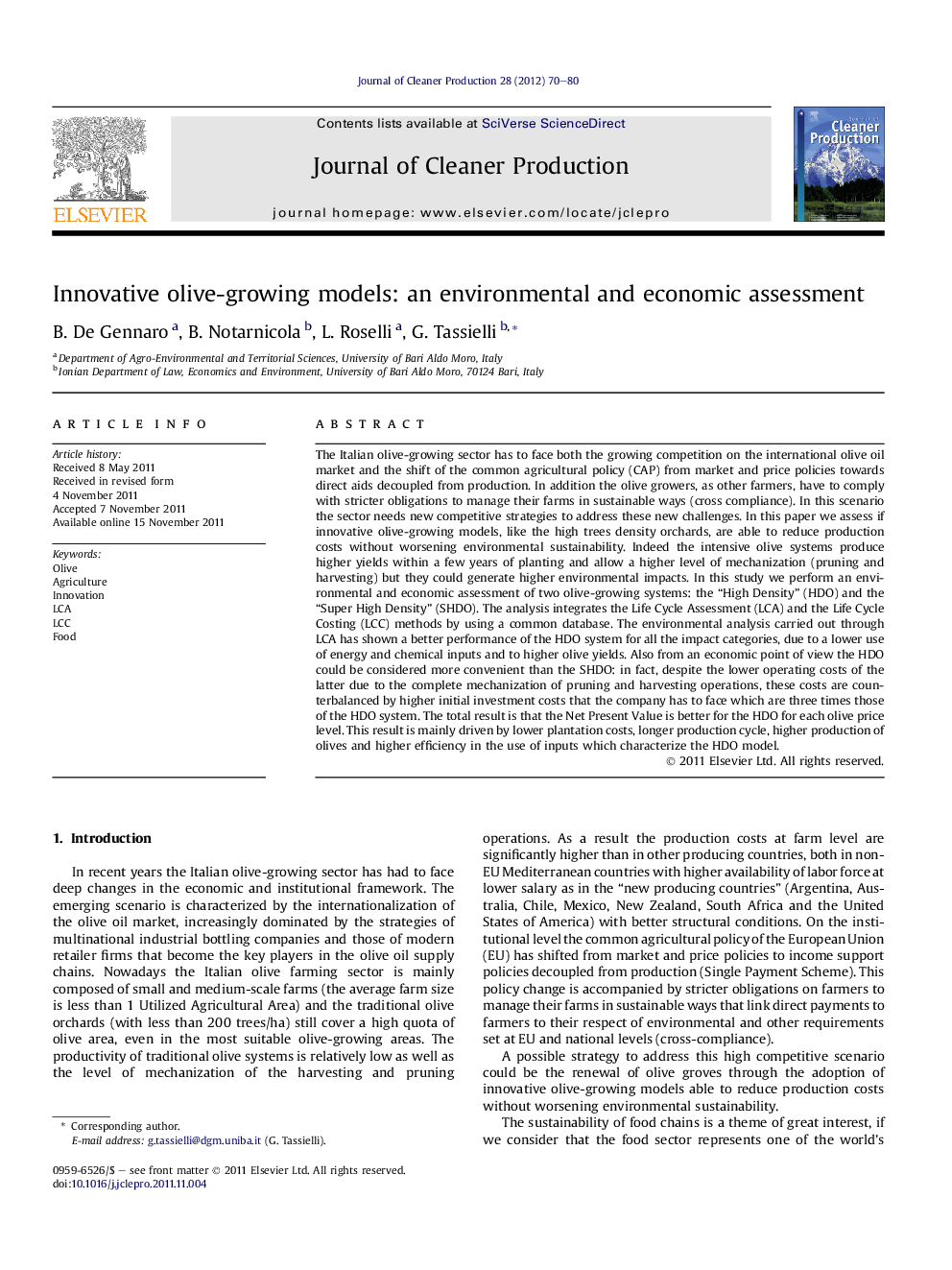| کد مقاله | کد نشریه | سال انتشار | مقاله انگلیسی | نسخه تمام متن |
|---|---|---|---|---|
| 1745714 | 1522217 | 2012 | 11 صفحه PDF | دانلود رایگان |

The Italian olive-growing sector has to face both the growing competition on the international olive oil market and the shift of the common agricultural policy (CAP) from market and price policies towards direct aids decoupled from production. In addition the olive growers, as other farmers, have to comply with stricter obligations to manage their farms in sustainable ways (cross compliance). In this scenario the sector needs new competitive strategies to address these new challenges. In this paper we assess if innovative olive-growing models, like the high trees density orchards, are able to reduce production costs without worsening environmental sustainability. Indeed the intensive olive systems produce higher yields within a few years of planting and allow a higher level of mechanization (pruning and harvesting) but they could generate higher environmental impacts. In this study we perform an environmental and economic assessment of two olive-growing systems: the “High Density” (HDO) and the “Super High Density” (SHDO). The analysis integrates the Life Cycle Assessment (LCA) and the Life Cycle Costing (LCC) methods by using a common database. The environmental analysis carried out through LCA has shown a better performance of the HDO system for all the impact categories, due to a lower use of energy and chemical inputs and to higher olive yields. Also from an economic point of view the HDO could be considered more convenient than the SHDO: in fact, despite the lower operating costs of the latter due to the complete mechanization of pruning and harvesting operations, these costs are counterbalanced by higher initial investment costs that the company has to face which are three times those of the HDO system. The total result is that the Net Present Value is better for the HDO for each olive price level. This result is mainly driven by lower plantation costs, longer production cycle, higher production of olives and higher efficiency in the use of inputs which characterize the HDO model.
Journal: Journal of Cleaner Production - Volume 28, June 2012, Pages 70–80